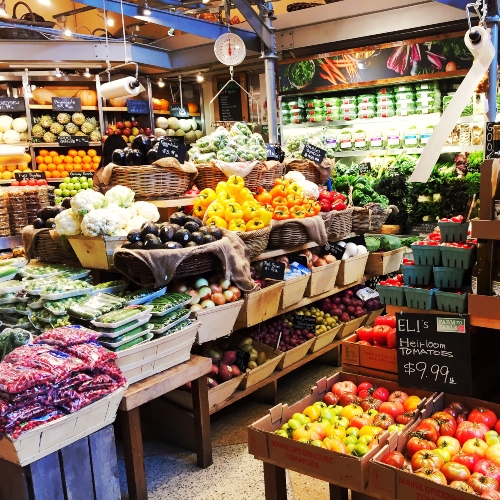What Is Comfort Food?

This post contains affiliate links. Check out my affiliate policies here.
Simple Recipes, Minimal Prep
Most of us don’t have a ton of time to d*ck around making homemade pasta dough every day.
I give myself more time than most for breakfast: a generous hour to eat leisurely and enjoy my coffee — but that doesn’t mean I want to spend that entire hour cooking.
What’s the point of cooking if you don’t have any time to enjoy your food?
The prep time of most of the recipes on this site is 10 minutes or less.
That means that you’ll spend 10 minutes or less per dish or meal chopping, stirring, and arranging. Which is slightly more time than you’d spend spreading frozen chicken tenders and french fries on a cookie sheet to stick in the oven, but trust me: it’s worth it.
Do You Have 5-Minute Prep Recipes?
Yes! Not all recipes take 10-minutes to prep. You’ll know right away which ones take more or less time because the estimated prep time is included in each recipe.
Some recipes require you to set aside a little extra time earlier in the week to prep ingredients. I really encourage you to do this. Yes, you can always buy pre-chopped veggies and fruits to save time, but the trade-off can be much greater.
We humans are designed to be comforted by food. Spending time with our food helps us connect with it. The rise of the Food TV industry is directly linked to the decreased amount of time we spend with our food.
Cooking can also help us be more mindful of what we eat. Cooking and baking can actually reduce stress.
Hate meditating? Try cooking instead.
Budget-Friendly Fresh, Seasonal Ingredients
Eating healthy doesn’t need to break the bank.
Sure, you can spend your whole paycheck at Whole Foods (pretty easily, too!), but you don’t need to when you focus on fresh, seasonal ingredients.
The recipes on this site are veggie-forward — meaning they’re filling, satisfying, and flavorful without meat as the star. That being said, we totally get that everyone has different dietary requirements and preferences, which is why most veggie-forward recipes also offer a meat add-in option as well as a dairy-free substitution.
We are totally aware of the role that meat plays on this planet and that many Americans are lactose intolerant (despite being advised by the government that dairy needs play a more major role in our diets than it actually should).
I personally love dairy and meat. But I’m also not blind to some of the larger issues surrounding these industries. This is why I try to offer advice on eating meat ethically and alternative options for both meat and dairy.
When it comes to balanced eating, I generally try to follow Michael Pollan’s advice: Eat food. Not too much. Mostly plants.
When we savor our food, we connect with it instead of using it as a tool of disconnection. We taste it. We allow it to transport us to another time and place.
Smart Prepackaged Foods
There used to be certain foods I refused to make myself because there’s no way I can reasonably expect to make dumplings or curry better than I’d get in a Shanghai or Indian restaurant.
I would also never pretend that I could tell you how to make these dishes authentically.
But sometimes your cravings don’t care that your favorite samosa chaat is hundreds of miles away in a different city. And they certainly don’t care that a pandemic shuttered thousands of restaurants.
In some cases, I recommend using prepackaged foods that use pronounceable ingredients (and tote very short ingredient lists in general) in some recipes. This cuts down on prep time and makes the dish 10x more flavorful than omitting the ingredient altogether would.
And sometimes I just let it all burn to the ground and make a packet of Hidden Valley Ranch.
Savoring and Connection
Most of us don’t pay attention to the food we eat when we’re eating it. Instead, we’re watching TV, micromanaging little ones’ dinners, or on our phones or tablets.
Food has gone from community-and-connection-creating nourishment to just another way to numb out and check out.
If we did savor each and every bite of food that went into our mouths, we probably wouldn’t eat that entire bag of Doritos or sleeve of powdered donuts. In fact, if we paid attention to our food, we might forgo a lot of processed stuff altogether.
Am I saying you should empty out your pantry and throw out all your favorite snack foods and dry goods? Nope, not even a little bit.
I happen to think that heavily processed foods and fast food do have a place in our lives — and in our society. Did you know that fast-food restaurants like McDonald’s and Burger King provide a much-needed service to the elderly and housing unstable communities?
Fast and heavily processed foods have a place in our society. And the good news is that to some degree, we get to choose the prominence of those industries in our own lives (unless you happen to live in an area of food apartheid or a food desert).
When we savor our food, we connect with it instead of using it as a tool of disconnection. We taste it. We allow it to transport us to another time and place.
Your best friend’s birthday party at Chuckee Cheese when you were eight; the pizza was rubbery but all of your favorite people were in the same room at the same time. Your monthly trip to Pizza Hut to claim your personal pan-sized pizza because you met your BOOK IT! reading goals.
When comfort food brings people together, strengthens communities, and provides a sensory experience, it’s doing its job. It’s when we break our connection with food that sh*t gets weird.
Marketing makes us think that we’re choosing our foods, but really those foods (or rather the Food Gods) are choosing us.
Marketing Mindfulness
One of the main pillars of this site is to uncover food marketing techniques that can derail your #foodgoals.
The fast-food and processed food industries spend billions of dollars each year marketing their products as indispensable lifestyle ‘choices’. Everything from the way the food tastes to the colors and font in a commercial was chosen by the Fast-Food Gods to make you want to buy — and subsequently become addicted — to their products.
You know that scene in The Devil Wears Prada where Meryl Streep explains to Anne Hathaway that the frumpy bargain-basement sweater the young intern was wearing was actually thoughtfully chosen for her (and every other consumer) seasons before by the very people she was standing with in that very room?
Marketing makes us think that we’re choosing our foods, but really those foods (or rather the Food Gods) are choosing us.
Every hamburger, chip, candy bar, and bucket of movie theater popcorn was engineered to make us crave and consume the maximum amount our stomachs can handle (and in some cases, can’t handle).
Food scientists actually sit around in a lab trying to determine how to make food more addictive. They cram in ‘nutrients’ to make us think it’s healthy and tell us we’re weak, lazy, or gluttonous when we become addicted to the thing they engineered to be as addictive as possible.
And then they turn around and sell us diets to ‘save us from ourselves’. And so the cycle continues.
As long as we live in a consumerist society, marketing won’t ever go away. As soon as laws are created to prevent companies from marketing to kids, the industry evolves and finds new ways to legally do so.
That’s why it’s up to us to call bullsh*t. If you find yourself eating, drinking, or shopping, ask yourself why you suddenly need those fries, beers, or shoes.
What Comfort Food Isn’t
Comfort Food Is Not a Diet
I’m not a doctor nor a nutritionist. Worse, I don’t even play one on TV. I’m not going to tell you what only your doctor or a nutritional coach can. Only you know your own body and what it wants/needs.
What you will see are articles on mind/body connection, mindful eating, and other ways to enjoy food without unrealistic limits.
The Only Rule of Comfort Food Is That There Are No Rules
Comfort food is all about food that makes you feel good. I can’t tell you what that is. My only recommendation is to eat real (unprocessed) food about 80% of the time.
If you eat out or grab fast-food or processed food a lot and don’t have 10 minutes per meal for prep time, swap out one fast-food meal a week for some comfort food. If you don’t have time to make your own condiments at the beginning of the week, buy ones that are minimally processed at your local grocery store (or order them online).
Try new things. Get out of your food rut.
Comfort Food Isn’t Keto, Low-Carb, Low-Fat, Calorie Restricting, Vegetarian, Vegan, or Fasting
Though, you can modify most recipes to fit any diet you follow. I don’t post carbs, calories, WW point values, or macronutrients, though.
Comfort Food Isn’t a Meal Kit
I have a confession. I freakin’ hate meal kits. The only time I’ve ever ordered a meal kit was during the initial trial offer period. And then I cancel them.
Is this bad karma? No. I really want to like the meal kit. But I honestly can’t justify paying $10+ a meal when I could just as easily get takeout or delivery for the same price.
And someone else makes the dang thing for me.
Don’t even get me started on the kits that don’t include all the ingredients you need to make the dish. What’s the point?
Especially in the age of grocery delivery, I just can’t understand the cost of most meal kits compared to the amount of food that actually comes in the kit.
I. Just. Can’t.
I created Comfort Food to show people that you can eat satisfying, partially-homemade, fresh food on a budget.
Store

Bookstore

Produce Boxes

Kitchen Toys

Spice Blends
Disclaimer
Hey, hay! Guess what, guys? I’m not a nutritionist, nor am I a doctor. Even worse, I’ve never even played one on TV. Please check with your doctor or nutritionist before switching up any diet. Most of my recipes/recommendations include known allergens. If you have an allergy or food insensitivity, please don’t use those ingredients in your cooking.
